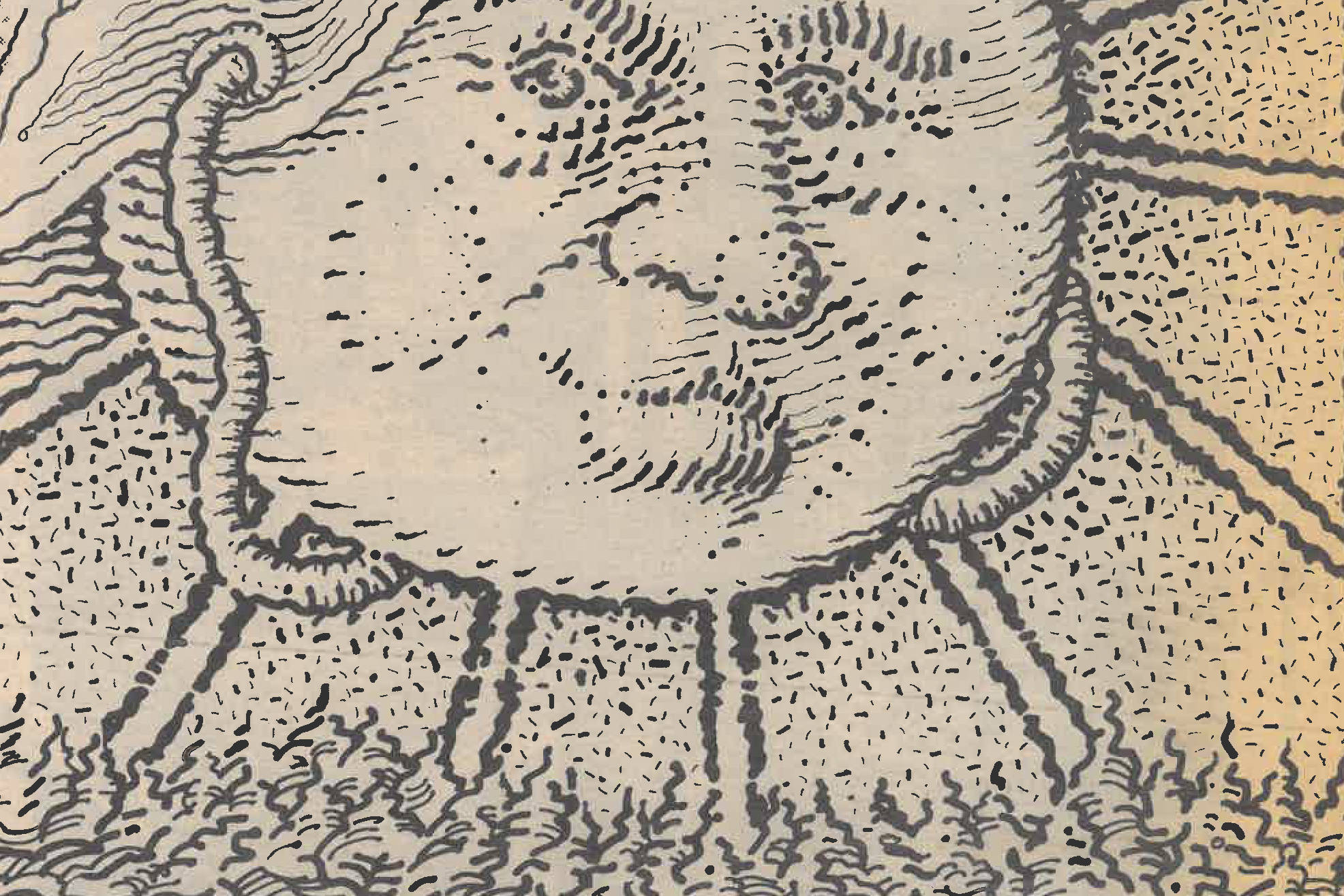THE LATE CARL SAGAN spent a tremendous amount of time trying to figure out why there were no traces of life, save for Earth’s, anywhere in the universe. Finally, in his book Cosmos, he floated the notion that life has sprouted up repeatedly throughout the universe and always followed the same unvarying pattern: evolving over millions of years to the point where it finally destroys itself and its planet.
It is an intriguing and in many ways irresistible theory. And it makes a tremendous amount of sense (more sense, at any rate, than the proposition that ours is the only life that has ever emerged after billions of years of universe-history). And I believe Sagan was wrong in only one respect: He posited that the devastating ending is always nuclear war, while the truth is likely to be something more . . . poetic. And imminent.
I was alerted to this issue by Seattle physicist/tinkerer/inventor/eccentric David Melville. (If you doubt his eccentricity, consider this: He once described Popular Mechanics to me as a “fantasy magazine.”) Melville sent me email alerting me to an experiment, scheduled for November, at the Brookhaven National Laboratory, in Upton, New York. Brookhaven has a new device, a particle accelerator called the Relativistic Heavy Ion Collider, that allows scientists to stage head-on atomic collisions and measure the results. The experiment in question will involve colliding gold ions at high enough speeds to create something called “quark-gluon plasma,” which is believed to have been the cosmic soup that took form a few milliseconds after the Big Bang. According to Brookhaven spokesperson Diane Greenberg, the experiment “will allow physicists and scientists to study what the universe may have looked like” immediately after that seminal explosion.
This is, of course, amazing. But Melville is more alarmed than excited. “Here is the problem,” he wrote. “It has been theorized by Steven Hawkings that from this ‘quark-gluon plasma’ other forms of matter are also produced. The most dangerous being a ‘Black Hole.'” If this experiment were to create a black hole, Melville says, it would be microscopic at first, but since black holes “grow in the presence of matter,” and since “there is no way to stop them” once they start growing, a Brookhaven-created black hole eventually would consume the Earth.
This sounds so much like science fiction that I was tempted to dismiss it outright. But Melville is not the only one out there who finds this alarming. An article describing the experiment appeared in the July 1999 Scientific American, and other physicists wrote in reaction, raising the same concerns Melville raised. And the London Times weighed in that same month with an article and editorial decrying the experiment.
Finally, I contacted Brookhaven, expecting to have my concerns laid to rest. But instead, there was something . . . I don’t know . . . disquieting about the lab’s reassurance. “We certainly do not wish to destroy the Earth,” emailed Diane Greenberg, who went on to say that she had been fielding questions from the panic-stricken for “several years.” Then she added, in what is either an epic understatement or a hedging of the biggest bet ever made, “It has drawn a great deal of attention and analysis from scientists at our lab and around the world, and they and we are quite sure it could never happen.”
Quite sure?
Lab director Dr. John Marburger was more emphatic at first, saying in a statement, “There is no chance that any phenomenon produced by RHIC will lead to disaster.” But even so, he has appointed a group of scientists to conduct an exhaustive study, which he expects will be completed “well before RHIC produces the high-energy collisions necessary for any of these [end-of-the-world] scenarios.”
Here’s hoping that that latter statement’s implication that end-of-the-world scenarios are definitely in the offing is a matter of careless English rather than careless science.
MELVILLE WAS NOT mollified. “I think the black hole scenario has still not been addressed enough,” he said. This set me to wondering about—among other things—the need for a “study” when there is “no chance” of anything dire happening, and about the Law of Unintended Consequences. It’s hard to believe the reassurances of scientists, in other words, when you think of all the bad things that have happened when they developed something that seemed like a good idea at the time, or achieved some kind of breakthrough, or got too scientifically ambitious. Instead of eradicating the staphylococcus bacterium, for example, they triggered the evolution of an invincible one that is antibiotic-proof. And just as our best and brightest minds these days are gravitating into the sciences, where they are discovering ways to recreate the beginning of the universe, so did our best and brightest minds gravitate to international politics in the 1960s, where their ingenuity in developing ways to turn the US into a superpower ultimately brought us Vietnam.
In other words, humans always fuck up—particularly when they’re really, really smart. Or, to quote Melville again, in discussing Sagan’s guess, “This experiment might now be another way this destruction could happen. Every advanced civilization would be conducting experiments such as this at sometime just to add this to their general physics knowledge.” At which point . . . kaboom again.
The most disturbing thing about this experiment and its story is its almost Biblical cast. It is eerily reminiscent of the stories about Adam and Eve eating the fruit of the Tree of Knowledge or those first great engineers building the Tower of Babel. Religion and literature are replete with tales of humans getting their comeuppance—i.e., inviting annihilation—by playing God. And it is hard to imagine anything more dangerously playing at God-like than trying to duplicate the creation of the universe.






